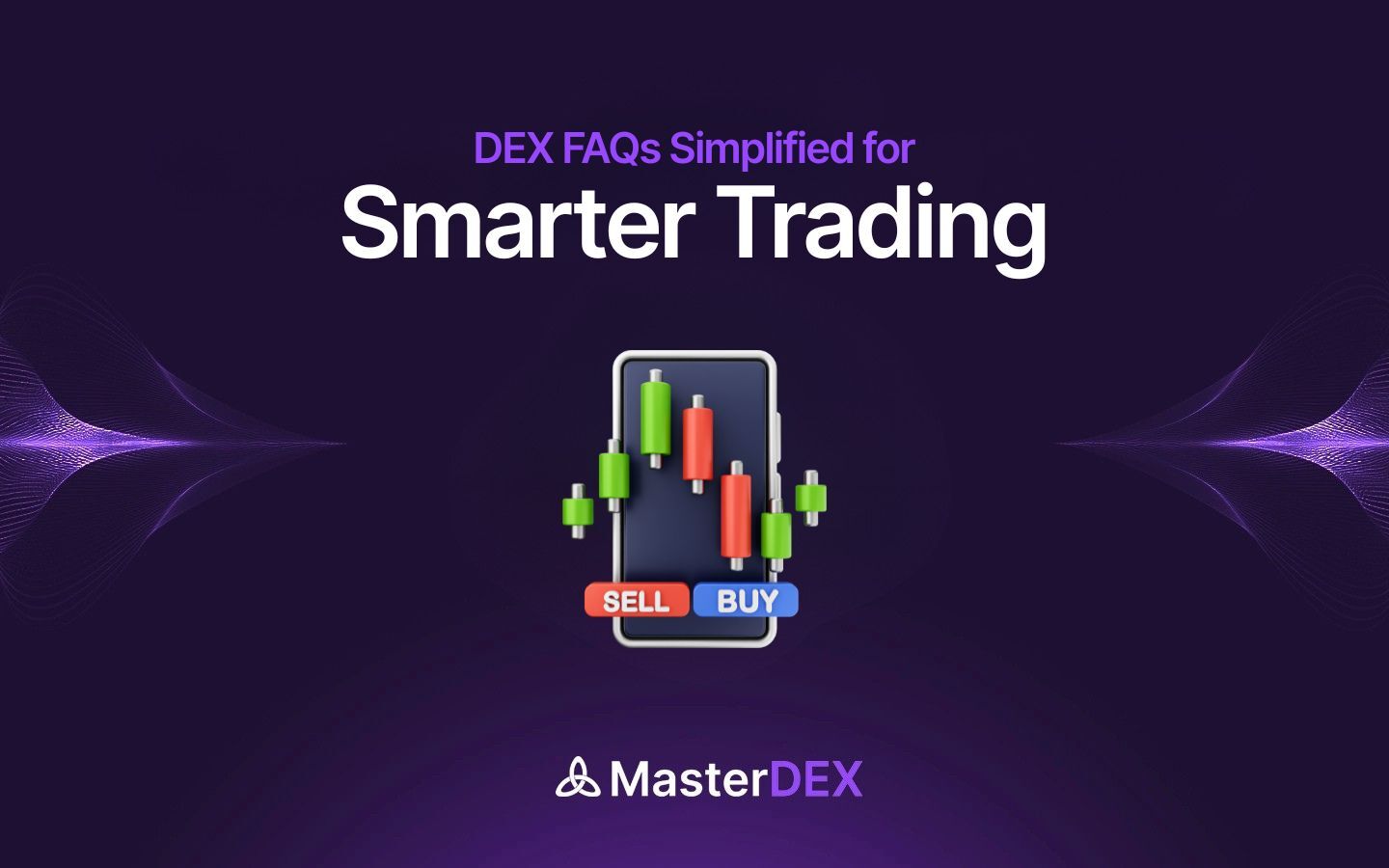The decentralized finance (DeFi) ecosystem has become a hotspot for traders looking to leverage blockchain technology for financial activities like lending, borrowing, staking, and trading. However, the highly volatile and fast-paced nature of DeFi markets requires traders to adopt optimized strategies to maximize their returns while managing risks effectively. MasterDEX, a cutting-edge decentralized trading platform, offers powerful features such as AI-driven analytics, to help traders maximize their efficiency and profitability in decentralized finance. In this article, we’ll explore the best practices for optimizing DeFi trading strategy.
Table of Contents:
ToggleOptimizing DeFi Trading Strategies: Step by Step Process
1. Understand the DeFi Ecosystem
Before diving into trading strategies, it is crucial to have a solid understanding of the decentralized finance ecosystem. DeFi operates on blockchain networks like Ethereum, Binance Smart Chain, and others, and encompasses various decentralized applications (dApps) such as decentralized exchanges (DEXs), liquidity pools, and yield farming platforms. Familiarize yourself with key DeFi platforms like MasterDEX to understand how they operate and how they can support your trading goals.
2. Start with Clear Goals
Define what you want to achieve through decentralized finance trading. Are you looking to grow your portfolio, generate passive income, or hedge against risks? Having a clear objective will help you choose the right trading strategies and tools. For instance:
- Portfolio Growth: Focus on trading high-potential tokens and using leverage effectively.
- Passive Income: Consider yield farming and liquidity provision.
- Risk Mitigation: Use stablecoins and hedging strategies.
3. Use Decentralized Exchanges (DEXs) Effectively
DEXs are at the heart of decentralized finance trading. Popular platforms like MasterDEX allow for token swaps without intermediaries. To optimize your trading on DEXs:
- Choose the Right DEX: Each DEX specializes in specific tokens or features.
- Leverage DEX Aggregators: Tools like MasterDEX aggregate liquidity from multiple DEXs to ensure you get the best price for your trades.
- Monitor Gas Fees: Ethereum-based DEXs can have high gas fees. Optimize trades during off-peak hours or use Layer 2 solutions like Arbitrum or Optimism to save costs.
4. Analyze Token Metrics
Conduct thorough research and analysis of the tokens you wish to trade. Some key metrics to consider include:
- Market Capitalization: Indicates the size and stability of a token.
- Trading Volume: High volume suggests liquidity, reducing the risk of slippage.
- Token Utility: Understand the use case and demand drivers of the token.
- Historical Performance: Analyze past price trends and market behavior.
Use tools like CoinGecko, DeFi Pulse, and others for comprehensive token analysis.
5. Diversify Your Portfolio
Avoid putting all your assets into a single token or project. Diversification minimizes risk and ensures that poor performance in one area doesn’t significantly impact your portfolio. Here’s how to diversify:
- By Asset Type: Spread investments across stablecoins, governance tokens, and utility tokens.
- By Platform: Use multiple decentralized finance protocols to reduce platform-specific risks.
- By Strategy: Combine active trading with yield farming or staking for a balanced approach.
6. Manage Risk Wisely
DeFi trading can be highly volatile, making risk management essential. Here are some tips:
- Set Stop-Loss and Take-Profit Levels: Define exit points to lock in profits or cut losses.
- Use Stablecoins: Convert volatile assets to stablecoins during market uncertainty.
- Avoid Over-Leveraging: While leverage can amplify gains, it also increases losses.
- Audit Protocols: Only interact with decentralized finance platforms that have undergone rigorous security audits.
7. Leverage Analytics and Automation Tools
Optimizing your strategy often requires leveraging advanced tools for analysis and automation. Some popular options include:
- Trading Bots: Automate your trades.
- Portfolio Trackers: Use AI-based tools
- On-Chain Analytics: Utilize Platforms like MasterDEX that provide insights into blockchain activity to inform your trading decisions.
8. Take Advantage of Yield Opportunities
Decentralized finance offers various ways to earn passive income. Optimize your strategy by exploring:
- Liquidity Mining: Earn rewards by providing liquidity to pools on DEXs.
- Staking: Lock tokens on platforms like Ethereum 2.0 for rewards.
- Yield Farming: Maximize returns by participating in farming protocols with high APYs.
Be cautious of impermanent loss and platform-specific risks when pursuing these opportunities.
9. Stay Updated on Market Trends
Decentralized finance is a rapidly evolving space, and staying informed about market trends is key to optimizing your strategy. Follow these tips:
- Monitor Social Media: Platforms like Twitter, Discord, and Telegram often have the latest news and insights.
- Read Whitepapers: Understand the fundamentals of new projects.
- Follow Key Figures: Influencers and thought leaders in DeFi provide valuable perspectives.
10. Test Strategies with Small Investments
Before committing significant capital to a new strategy, test it with smaller amounts. This approach minimizes risk while allowing you to fine-tune your methods based on real-world performance.
11. Beware of Scams and Rug Pulls
Decentralized finance’s permissionless nature attracts bad actors. Protect yourself by:
- Researching Projects Thoroughly: Avoid platforms with anonymous teams or unclear goals.
- Using Reputable Platforms: Stick to well-known and audited protocols.
- Diversifying Investments: Spread your funds across multiple projects to mitigate risks.
12. Continuously Optimize and Adapt
Decentralized finance markets are dynamic, requiring ongoing evaluation and adjustment of your strategy. Regularly analyze your performance, identify areas for improvement, and adapt to new opportunities and challenges.
Interested to learn more about decentralized exchanges, check out the evolution of DEX here!
Conclusion
Optimizing your trading strategy in decentralized finance involves a combination of research, risk management, diversification, and the effective use of tools and platforms. By staying informed, leveraging analytics, and continuously refining your approach, you can navigate the complexities of the DeFi ecosystem and maximize your trading success. As always, ensure you’re managing risks effectively and only investing what you can afford to lose.



